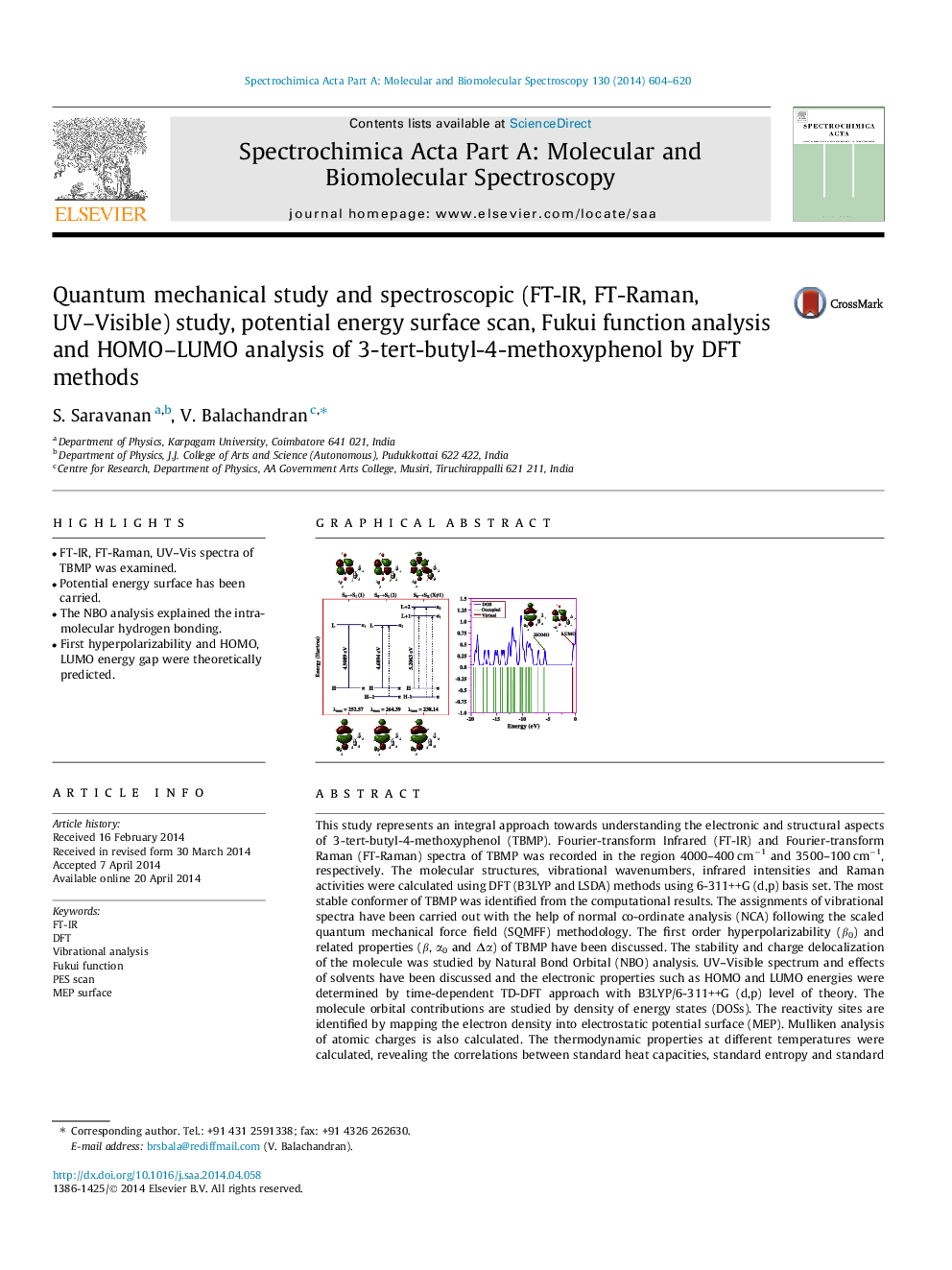| Article ID | Journal | Published Year | Pages | File Type |
|---|---|---|---|---|
| 1230393 | Spectrochimica Acta Part A: Molecular and Biomolecular Spectroscopy | 2014 | 17 Pages |
•FT-IR, FT-Raman, UV–Vis spectra of TBMP was examined.•Potential energy surface has been carried.•The NBO analysis explained the intra-molecular hydrogen bonding.•First hyperpolarizability and HOMO, LUMO energy gap were theoretically predicted.
This study represents an integral approach towards understanding the electronic and structural aspects of 3-tert-butyl-4-methoxyphenol (TBMP). Fourier-transform Infrared (FT-IR) and Fourier-transform Raman (FT-Raman) spectra of TBMP was recorded in the region 4000–400 cm−1 and 3500–100 cm−1, respectively. The molecular structures, vibrational wavenumbers, infrared intensities and Raman activities were calculated using DFT (B3LYP and LSDA) methods using 6-311++G (d,p) basis set. The most stable conformer of TBMP was identified from the computational results. The assignments of vibrational spectra have been carried out with the help of normal co-ordinate analysis (NCA) following the scaled quantum mechanical force field (SQMFF) methodology. The first order hyperpolarizability (β0) and related properties (β, α0 and Δα) of TBMP have been discussed. The stability and charge delocalization of the molecule was studied by Natural Bond Orbital (NBO) analysis. UV–Visible spectrum and effects of solvents have been discussed and the electronic properties such as HOMO and LUMO energies were determined by time-dependent TD-DFT approach with B3LYP/6-311++G (d,p) level of theory. The molecule orbital contributions are studied by density of energy states (DOSs). The reactivity sites are identified by mapping the electron density into electrostatic potential surface (MEP). Mulliken analysis of atomic charges is also calculated. The thermodynamic properties at different temperatures were calculated, revealing the correlations between standard heat capacities, standard entropy and standard enthalpy changes with temperatures. Global hardness, global softness, global electrophilicity and ionization potential of the title compound are determined.
Graphical abstractFigure optionsDownload full-size imageDownload as PowerPoint slide
